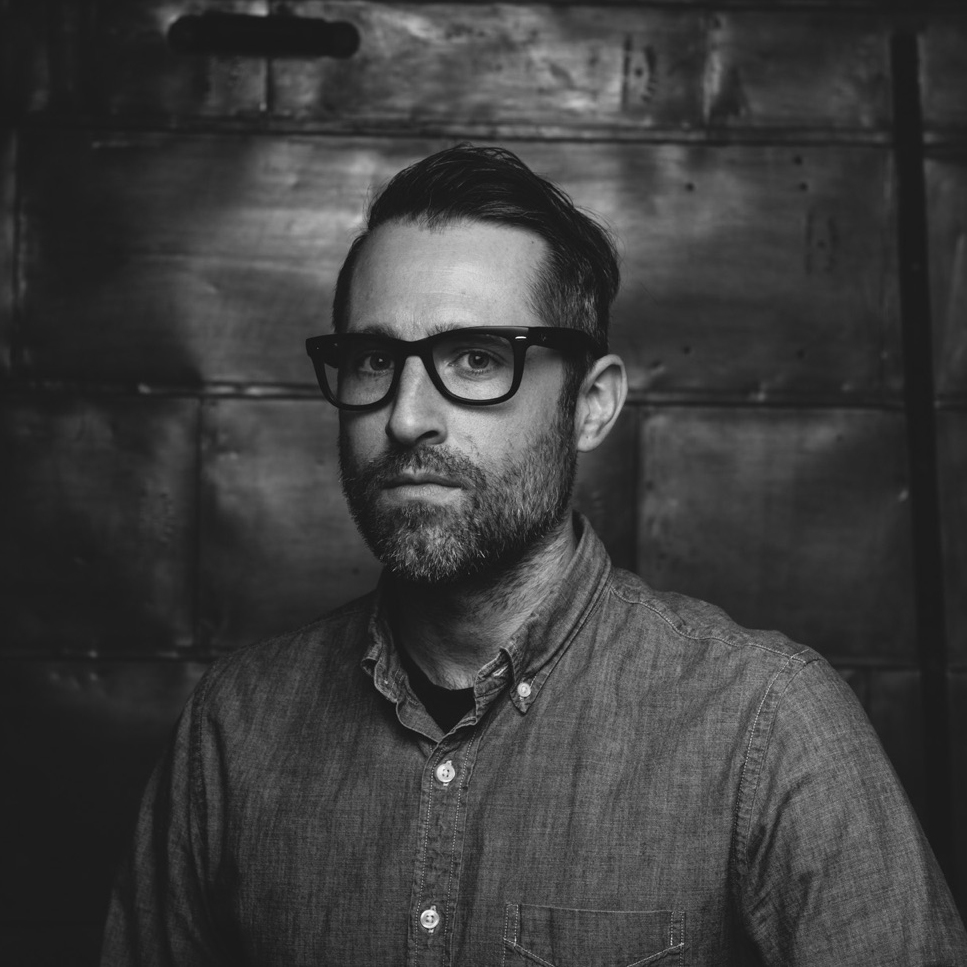At the Gates Discuss New Album, 'At War with Reality'

It’s been pouring rain for 48 hours straight when Guitar World wakes up in Gothenburg, Sweden, on the day of our photo shoot with At the Gates.
We’d planned to take the melodic death-metal legends to a few outdoor locations around their home city before sitting down to get the story behind their first studio album in 19 years, the critically acclaimed At War with Reality.
We’ve flown nearly 4,000 miles to complete this task, and we’re cringing at the possibility of being rained out. But as we throw back the curtains in our hotel room overlooking the Göta älv river, we see that the ancient Norse gods have granted us a respite.
The season’s copious rainfall has momentarily subsided, allowing brilliant sunlight to illuminate the river and myriad autumnal colors of the tree leaves throughout the coastal city.
It’s in the crucible of Gothenburg’s brutal climate and breathtaking old-world beauty that a community of young musicians in the early Nineties banded together and forged a new subgenre of extreme metal.
At the Gates—along with contemporaries like Dark Tranquility, In Flames and Dissection—merged the melodic dual-guitar elements of the New Wave of British Heavy Metal with the violent sonic assault of Florida death metal to create a new hybrid of melodic death metal, known now as the Gothenburg Sound.
“Nineteen ninety-five was an important year for all of us,” says Anders Björler, At the Gates’ founding guitarist, when we meet later that day. “We released Slaughter of the Soul, Dissection had Storm of the Light’s Bane, Dark Tranquility released The Gallery, and In Flames recorded The Jester Race. Everyone signed to bigger labels, and we got on U.S. and European tours. It was a groundbreaking year for all of us, and it helped distribute that sound throughout the world. Things really took off.”
But At the Gates were hardly an overnight success. The band—Anders and his twin brother, bassist Jonas Björler, guitarist Alf Svensson, drummer Adrian Erlandsson and vocalist Tomas Lindberg—had formed five year’s prior and released two ambitious death metal records: 1992’s The Red Sky Is Ours and 1993’s With Fear I Kiss the Burning Darkness.
The following year’s exceptional Terminal Spirit Disease further established them in the underground scene and featured Martin Larsson replacing Svensson on second guitar.
But it was with their fourth album, Slaughter of the Soul, that At the Gates found international success and influenced a generation of musicians.
“Coming off of Terminal Spirit Disease, we actually had a sit down where we were focused on creating something special,” Lindberg says. “We were at a bit of a musical make-it-or-break-it point. Either we put all our effort into this and make a great album, or we might as well break up.”
Their hard work paid off. Slaughter of the Soul’s tight thrashing songs were filled with precise dual-guitar work, catchy melodies, furious tones and shredded, howling vocals. The inspired 34-minute album isn’t just one of the best examples of Gothenburg death metal—it also ranks among the most influential metal albums of the Nineties. With Slaughter of the Soul, At the Gates effectively inspired the birth of the entire metalcore genre, which would dominate the extreme metal landscape throughout the new millennium in the hands of such bands as Arch Enemy, Killswitch Engage and Shadows Fall.
But while the guys managed to create the best album of their career, in an ironic twist, At the Gates broke up before they could enjoy any of the spoils from its success.
“I had just had enough,” Anders Björler says of his decision to leave the band in 1996 after touring behind Slaughter of the Soul. “Eight months of touring and we got paid only in alcohol and beer!”
“We were also so young, inexperienced and unused to coping with outside, or internal, pressure,” Lindberg adds. “There’s no real communication when you’re 20. If we were the persons we are today, that would have never happened. But, also, we probably wouldn’t be the persons we are today if that didn’t happen!”
After At the Gates disbanded, the musicians stayed active with other groups: the Björler brothers and Adrian Erlandsson with the Haunted, and Lindberg with Disfear, Lock Up, the Great Deceiver and others. They also pursued vocations and passions outside the music industry. Anders went back to school for filmmaking, and Lindberg became a high-school teacher.
“During the period we weren’t active as a band, everyone did other projects that allowed us to express ourselves without pressure,” Lindberg says. “I tried a lot of things, and we got rid of a lot of stuff from our systems.
”With their internal conflicts laid to rest, the band members were able to entertain the possibility of a reunion. Which is exactly what happened in 2007 when they announced that they were embarking on a run of European festivals and Japanese dates. These shows revealed a reinvigorated group firing on all cylinders, but At the Gates were adamant that no new material was on the horizon.
The band wanted Slaughter of the Soul’s legacy—which by that time had become a landmark in the genre—to remain their final album. But the success of the tours, as well as the band’s revitalized chemistry, eventually softened their position, and the musicians started working on a new album.
“The music just sounded so much better than back in the day,” Anders Björler says of the motivation to write new material. “We had all been playing in different bands, and we all sounded better.”
Now, nearly two decades since their last studio outing, At the Gates are back with At War with Reality, a powerhouse album that reaffirms their musical prowess and genre dominance, and contains the band’s most emotionally heavy performance yet.
“We wanted to have a really honest and emotional touch on this record, not just mechanical and aggressive,” Lindberg says. “We wanted to color it up with a bit with frustration, desperation and melancholy. That was our intention, and I think we succeeded.
At the Gates is synonymous with the term Gothenburg Sound. But I’m curious to know, what does that term mean to you personally?
ANDERS BJÖRLER To me it just describes a small musical scene in the beginning of the Nineties. It means friendship and helping each other out. We were part of this new scene. But later it was a post-construct by journalists to describe this musical scene from Gothenburg, even though all the bands were very different, sound-wise.
LINDBERG We’re friends with all the bands in the [Gothenburg] scene. We hung out and inspired each other to make music and have an open mind about how you can do death metal. But we were all different entities at the same time. I think the Gothenburg sound was actually cemented by other bands afterward. You had stuff in Massachusetts, with Shadows Fall, Killswitch Engage and all these other bands, and also in Sweden with the second generation, like Soilwork and Arch Enemy. These bands emulated all the different aspects of all the Gothenburg bands into one sound.
One distinct aspect of that sound is a heavy melodic sensibility incorporated into death metal. Where do the roots of this melodicism lie for you?
LINDBERG We started out as kids listening to early hard rock and heavy metal. I think our generation was lucky. Our tastes evolved as the music scene evolved. From heavy metal to New Wave of British Heavy Metal, to hardcore punk of the early Eighties, to thrash. Then the death metal thing happened, as we were teenagers and just starting to play ourselves. It was all very natural. When we were eight we were listening to Iron Maiden; 10 it was Metallica and 14 was Morbid Angel.
ANDERS BJÖRLER And when At the Gates eventually formed, the way that things progressed in a more melodic direction had a lot to do with the other guitar player, Alf [Svensson]. He had some very original and weird ideas. He brought in a lot of classical, folk and even opera influences.
You and Jonas also have a connection with classical music, right?
ANDERS BJÖRLER Yeah, our granddad was a music teacher and a violinist in a symphonic orchestra.
When you first started learning music, did you study classical instrumentation or just pick up a guitar and learn Morbid Angel riffs?
ANDERS BJÖRLER I first started practicing the piano back at home. It wasn’t on a professional level. My mother just had a piano and I played around on it. I also started out on a recorder flute, which is a common thing in Swedish schools.
LINDBERG Even I played that! [laughs]
ANDERS BJÖRLER Because it’s a categorically easy instrument to get into. It’s what everyone starts with. [laughs] But for me it turned into playing clarinet for five years and learning a little bit more about music theory. Then I met Tomas and got interested in guitar. I actually found some Metallica and Slayer tablature and learned by playing along with those records. I’m totally self-taught. You are as well, right, Martin?
LARSSON I had classes as well, but I never did the homework. [laughs] My school was also figuring out Metallica riffs in my room.
Jonas, did your journey to playing bass follow a similar path as your brother?
JONAS BJÖRLER Yes, I also played recorder flute. [laughs] Then nothing really happened until I was around 16. I heard some cool stuff like Metallica and Slayer and I wanted to be in a band. There was this crappy band that needed a bass player. They had a bass, so I didn’t need to buy one to join. I think they were called Demolition. They were a really crappy hybrid between AC/DC and Pestilence. It was the worst band you can imagine. [laughs]
Can you talk about how At the Gates’ style progressed from the more experimental early albums to the concise assault of Slaughter of the Soul?
LINDBERG In terms of songwriting, Alf was an influence on the weird stuff that was part of our early career. Me and Alf were both in Grotesque, and we left to form At the Gates with Anders and Jonas. He was the one that had experience of writing songs in a proper band, so we leaned against him.
Did your gear change as your sound evolved?
ANDERS BJÖRLER All our records are examples of the situations in the studio and our finances. It was what we could afford to buy and what was available at the time. Equipment-wise, we got started because of something called Study Circles. It’s state-sponsored financial aid for artists. All the bands got this back in the day. It was a big help to buy equipment, because we were 16 when we started and really poor. They gave us money to buy amps, guitars and drums. That service is still available for people in Sweden to use.
Sweden better get ready for a bunch of American guitarists trying to move there!
ANDERS BJÖRLER [laughs] And it’s not even just music. It’s art in general. If you’re interested in having a book circle, you can get money for that as well.
JONAS BJÖRLER We also have free musical school for kids up until they’re 14 years old. So that’s really good. That’s a huge help.
Let’s step back to Slaughter of the Soul for a minute. That record went on to become a huge hit that influenced a lot of metalcore bands that would achieve success in the 2000s. Did you know you were onto something special when you were cutting those tracks?
LINDBERG We put a lot of effort into making that record, and it was a big step up for us. We were definitely doing things we hadn’t done before. But the scene was going nowhere, we were broke, and it wasn’t like a big career success at the time.
ANDERS BJÖRLER It wasn’t an instant success in any way. Signing to Earache Records was a big step, because it was the first album that had major distribution. It also allowed us to film a high-budget video and got us on U.S. tours.
LARSSON Yeah, the support tours in the U.S playing with Morbid Angel and Napalm Death helped us reach a lot of people.
ANDERS BJÖRLER But the real hype came after we split up.
JONAS BJÖRLER The album’s success didn’t come until much later, like 1999. I mean the term Gothenburg Sound wasn’t even coined until the 2000s.
At the Gates broke up in 1996 after the support tours for Slaughter of the Soul. Were you all just burnt out at the time?
ANDERS BJÖRLER I was the one who left. And I guess the other guys felt it was impossible to continue without me. Like I mentioned, we weren’t super successful at the time. And it was a pretty early stage in our lives, and I wanted to go back to school.
What did you study?
ANDERS BJÖRLER I went to film school for three years. Also, about two months after I left At the Gates, I joined the Haunted. It was the right time and right place for something fresh. Going into the rehearsal room with no pressure was great.
When At the Gates reformed in 2007, you were all insistent that no new records were on the horizon. What made you change your minds?
LINDBERG After hearing those songs played live again, we understood how good that style could sound with all of us playing it again, and also how broad our spectrum is with At the Gates. There are probably limits as to how far we can progress within the frame of the band. But we have a very wide-open field compared to other death metal bands. We can do pretty creative stuff within this band. And that’s very inspiring.
Did you feel pressured by your own legacy?
JONAS BJÖRLER No, actually for me it was just important to make it stand out from the Haunted stuff, because I was writing for both bands at the same time.
Did you have to scrap a lot of riffs because they were too similar to the Haunted’s sound?
LINDBERG Jonas didn’t have to scrap them. Anders did it for him! [laughs]
JONAS BJÖRLER [laughs] I did maybe 12 or 13 songs ideas, and we maybe used four or five.
ANDERS BJÖRLER [laughs] I also presented some ideas that Jonas wasn’t into. But our communication was on a much more mature level than it was as kids. Back then we would scream at each other and punch each other, for real.
LINDBERG I remember a cobblestone being thrown once.
JONAS BJÖRLER Now it also helps that we live three hours away from each other. [laughs] But back to the question, in terms of tuning, the Haunted is D and At the Gates is B. So when we tune down three semi-tones [from D] to At the Gates tuning, you get into the feeling of the band. That makes a huge difference when you sit down and start writing riffs. At the Gates is going to be heavier because of those tunings. And the Haunted melodies are different than the ones in At the Gates, which are more melancholic and atmospheric.
LINDBERG I think our viewpoint for this record was different, too. Slaughter of the Soul was a very reactionary, aggressive and angry album based on our experience at the time. It was an angry-young-man record. Even when we were touring on that one, I know Jonas said he was disappointed because that record was too one-dimensional and missing more of the emotional aspects of the earlier albums. So that was something we had in mind this time: we wanted not only dynamics in arrangements but emotional dynamics on different songs.
Slaughter of the Soul was recorded 19 years ago, at a time when Pro Tools wasn’t on everyone’s laptop. How was the recording process different this time around?
ANDERS BJÖRLER Back then we had to learn the song, rehearse it and then record it to a tape recorder and listen back. But it was still sounding terrible, because it was recorded in a rehearsal room. Now you can have a sketch in the computer in 15 minutes, and it sounds awesome.
LARSSON It’s been much more transparent this time. It’s all home demos being bounced back and forth, and you can comment on anything right away.
JONAS BJÖRLER I like that format, but you shouldn’t forget you’re a band. You still need to play together. When we had all the demos together, we met and played through everything.
LARSSON We wanted to make sure the whole album was playable live.
LINDBERG When we’re in the studio, we want to use the new technology, but we had to remember to get good basic organic analog sounds as well. Because we’ll never be the band that sequences everything. So we embrace the new technology, but we had to make sure we don’t rely on it too much.
You recorded in Gothenburg at Studio Fredman with Fredrik Nordstrom, who also worked on Slaughter of the Soul. Did that fact alone make him the obvious choice?
ANDERS BJÖRLER Well, we wanted something in Gothenburg, and there aren’t many studios left. And Fredman was a good choice because Fredrik was very influential on the sound of Slaughter of the Soul. He had many ideas, especially about guitar sounds.
Anders, I read a quote that for Slaughter, you played through a homemade cab that you and your dad built. Did you bring that into the studio this time?
ANDERS BJÖRLER Back then I didn’t have money to buy a cabinet, so I built one. It was basically two 10-inch and two 12-inch Celestions in a big wooden cabinet. It sounded very good and compact. But I sold it a year after we recorded Slaughter of the Soul. Actually, Jesper of In Flames really liked the sound and he wanted to buy it. But I said no. [laughs] But they still got a similar sound on The Jester Race.
LINDBERG Yeah they really tried hard on that one, no? [laughs]
ANDERS BJÖRLER [laughs] My guitar amp was a solid-state Peavey Supreme, and we did Boss Heavy Metal and Metal Zone pedals in serial. I played an Ibanez Maxxus, which I think is the predecessor to the Joe Satriani model. It was a hollowbody and very resonant, with lots of sustain.
You’re back with Peavey again this time, right?
ANDERS BJÖRLER We switched to Line 6 HD500 for live use. It’s the most rewarding. But we usually play Peavey 6505s or 5150s. I play a custom version of the Ibanez Prestige R6 with one Lundgren bridge pickup. They’re a Swedish company that makes pickups for Meshuggah and Scott Ian from Anthrax. It’s the most powerful and aggressive passive pickup I’ve ever heard.
JONAS BJÖRLER It’s a very passive-aggressive pickup. [laughs]
ANDERS BJÖRLER Good one. [laughs] I like active pickups, too. We used EMG-81s in the studio because they were on my new baritone guitar from Ibanez, their new Iron-Label series. It sounds fantastic, and it’s pretty affordable, too, maybe $500. We actually played baritone on the whole album. I even did most of the solos on the baritone as well.
JONAS BJÖRLER It’s just guitarists trying to be bassists. [laughs]
Martin, what are you playing these days?
LINDBERG Copy and paste Anders’ setup. [laughs]
LARSSON [laughs] I’m not so picky. I’ll play whatever I can get my hands on. It’s an Ibanez RG Prestige and the Line 6 as well.
ANDERS BJÖRLER I think he’s got the Seymour Duncan pickups, which are the factory default.
If you’re playing a similar setup, is it just your individual technique that helps distinguish the parts?
ANDERS BJÖRLER The pickups separate the sounds. My pickups are really hot.
LARSSON But our playing styles are very different as well. He has a really unorthodox way of playing.
ANDERS BJÖRLER I start from low, like an upstroke, when I play. I have this alternate triplet picking technique, which I actually wasn’t aware of until Jeff Loomis from Nevermore noticed and said, “You have a weird style!” [laughs] I had no idea. I do up-down-up; down-up-down. I alternate on every pair of triplets so it gets really fast.
Jonas, what’s your setup this time around?
JONAS BJÖRLER I play EBS TD660 amps now. I used to use the 650, but the 660 has a better EQ in bass in mid. I have a new cabinet with 8x10 neodymium speakers, which is really lightweight and great for touring. I also have a Pro-Co Rat distortion pedal, which I set at three or four distortion level at maximum volume. I play a Warwick Corvette for touring, which is really lightweight and not too expensive. I also have a Warwick Streamer Stage I and Stage II. But for the At the Gates record, I actually used the Corvette in the studio.
Anders, you are known for deploying succinct solos that are lyrical, heavy and very well constructed. Can you speak to your process of composing them?
ANDERS BJÖRLER The purpose for solos for me is to basically make a melody that fits with the chord structure beneath it. I like simple notes. A great solo could be just one note. I like finding those powerful melodies that stick in your head. That’s my starting point. Almost like a classical theme in many ways. But there’s no real logic or thought behind it.
Tomas, let’s finish by putting you on the spot. What is your favorite guitar moment on the record?
JONAS BJÖRLER The silence between songs. [everyone laughs]
LINDBERG There’s a lot of great guitar moments on this record. A lot of classic thrashing stuff, a lot of different harmonics from the Russian neoclassicists I guess. I really enjoy our Slayer moment in “Heroes and Tombs.” That intro is very eerie, like “Seasons in the Abyss.”
ANDERS BJÖRLER I bought that riff online at ClassicRiffs.com. [laughs] It was only $19.95!
LINDBERG [laughs] Actually, didn’t that come from the Bolt Thrower riff that I ordered from you, Jonas?
JONAS BJÖRLER It started as my song, but it ended up with zero of my riffs. [laughs]
LINDBERG I asked Jonas for one Bolt Thrower riff, and he wrote one for me and it was perfect! But Anders didn’t like it, of course.
ANDERS BJÖRLER It started as a Bolt Thrower song and ended up as a Slayer song with an Autopsy outro. So anything can happen!
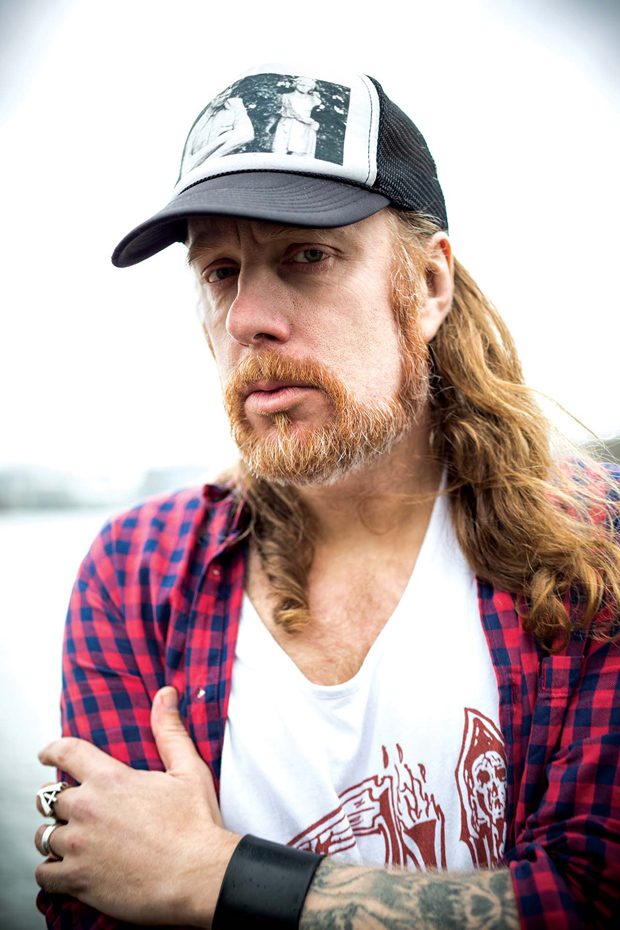
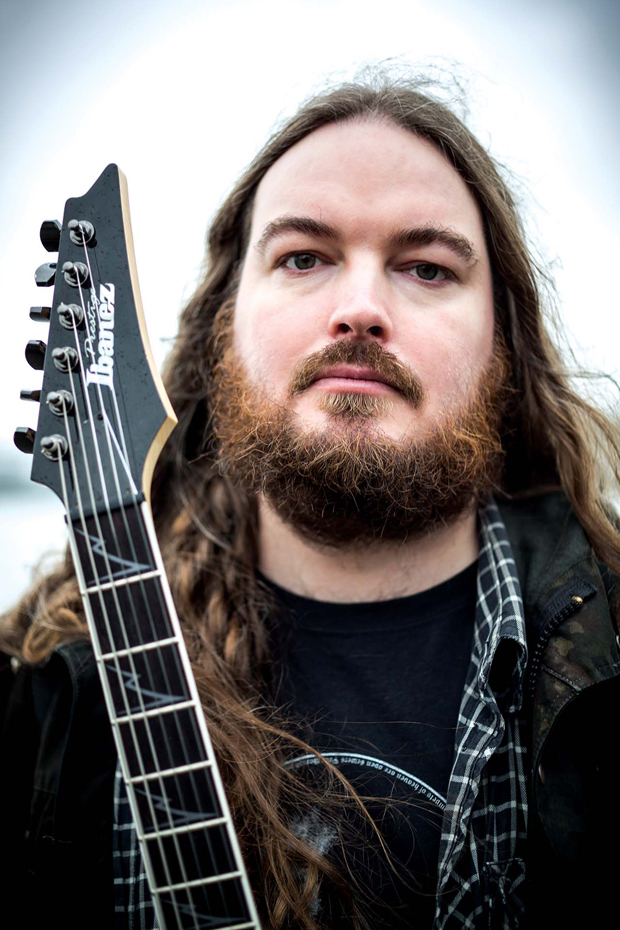
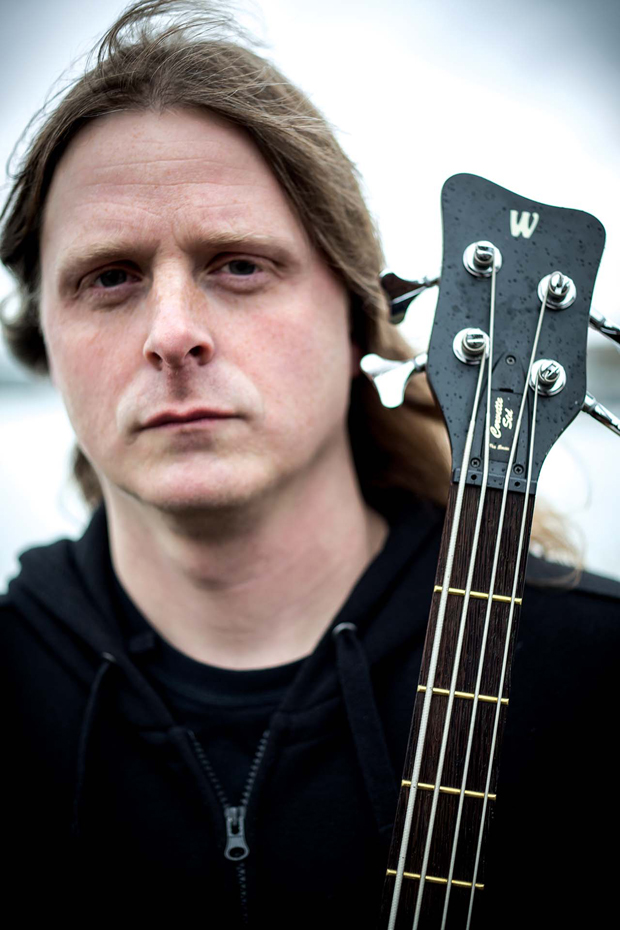
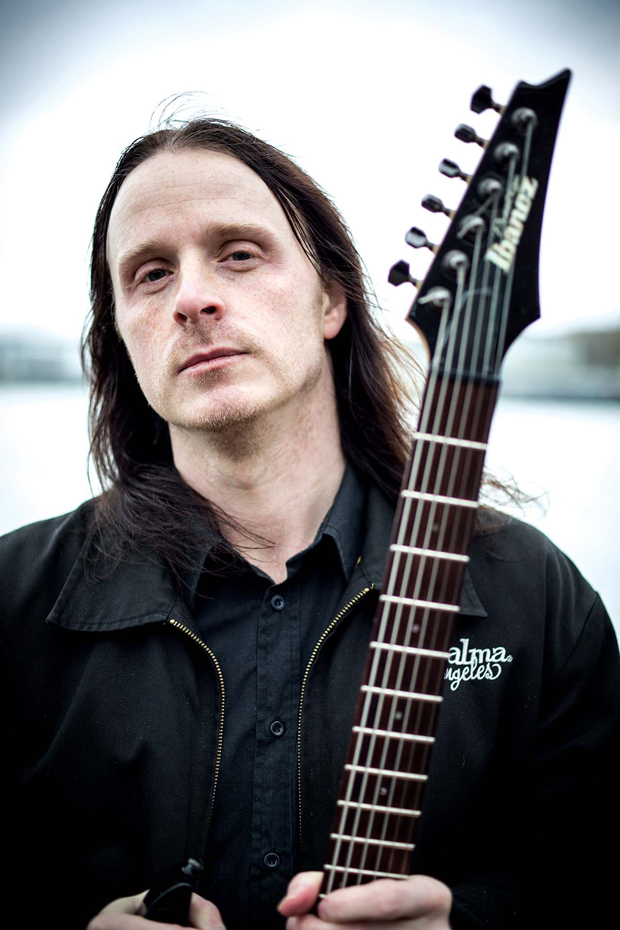
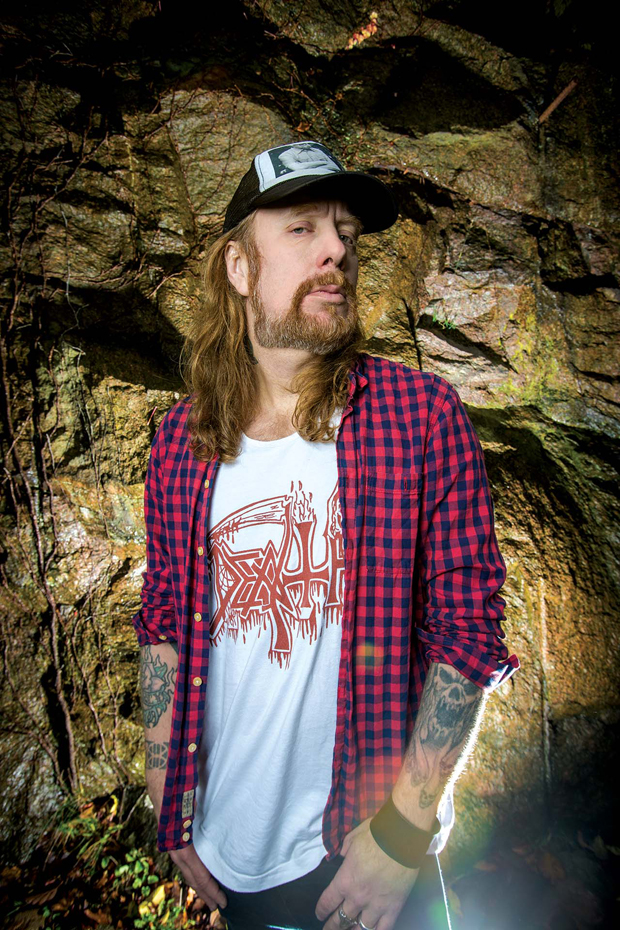
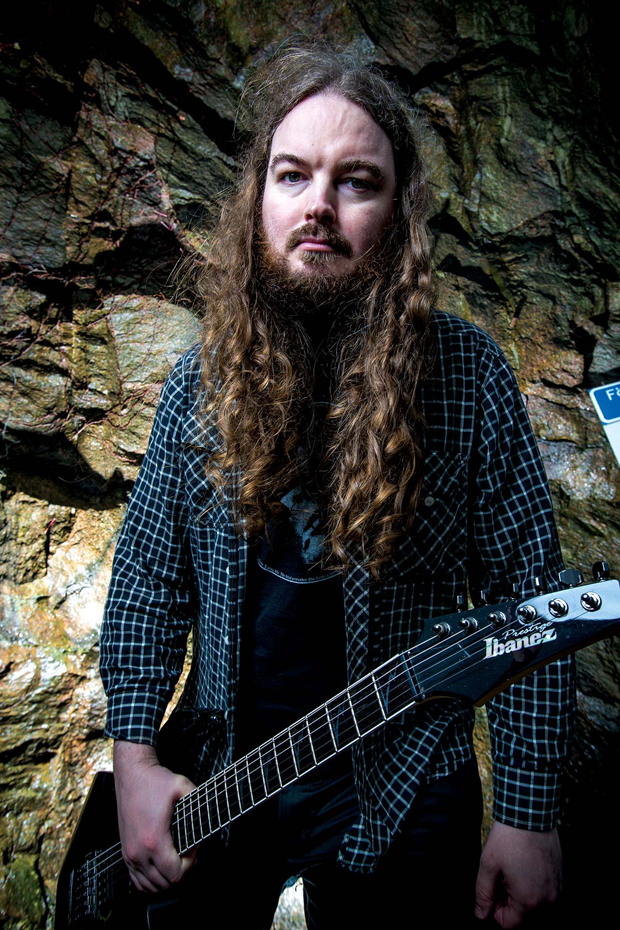
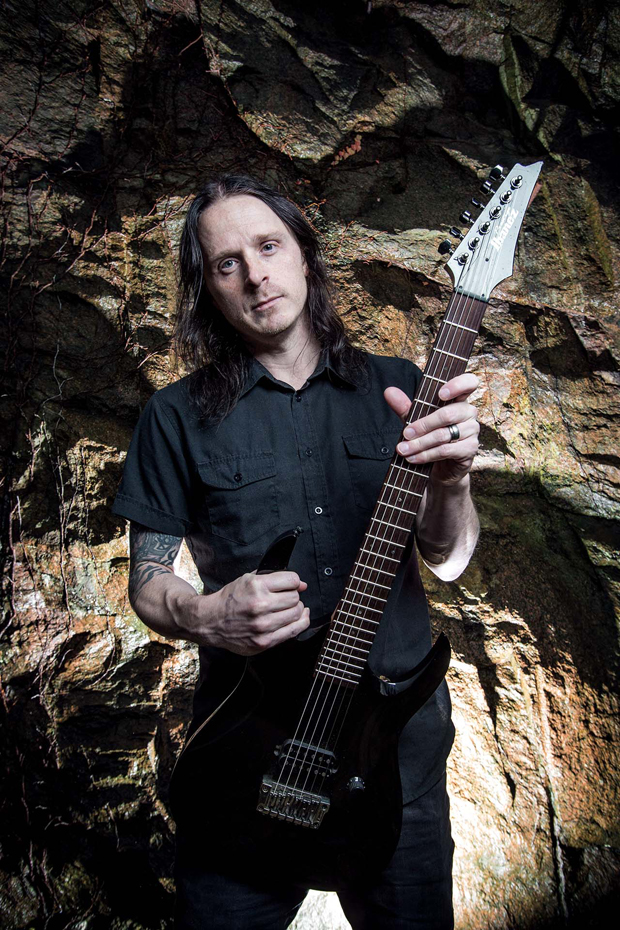
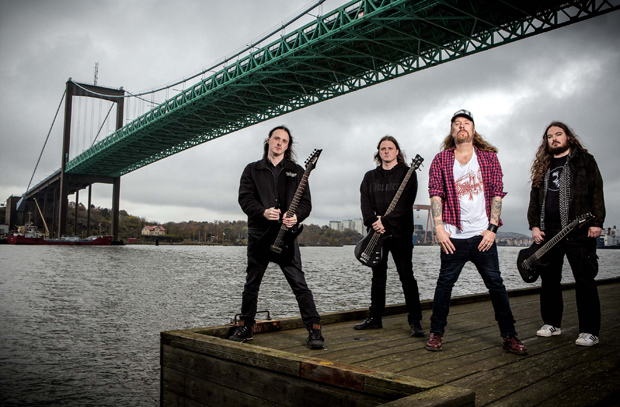
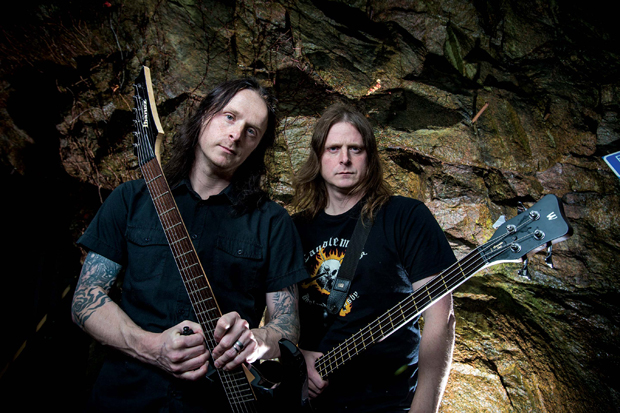
Get The Pick Newsletter
All the latest guitar news, interviews, lessons, reviews, deals and more, direct to your inbox!
Brad is a Brooklyn-based writer, editor and video producer. He is the former content director of Revolver magazine and executive editor of Guitar World. His work has appeared in Vice, Guitar Aficionado, Inked and more. He’s also a die-hard Les Paul player who wishes he never sold his 1987 Marshall Silver Jubilee half stack.
